Advertisement
Certain genes passed down from either side of your family can put you at a higher risk for breast cancer and related cancers

We're all born with a genetic makeup that determines certain aspects of who we are. The genes passed down from your biological parents (and their parents and their parents and so on) influence a lot about you. Your height. Your nose shape. Your hair color (though your stylist can do wonders for that).
Advertisement
Cleveland Clinic is a non-profit academic medical center. Advertising on our site helps support our mission. We do not endorse non-Cleveland Clinic products or services. Policy
But the family connection doesn’t end there. Your genes can also make you more susceptible to certain health conditions, like cystic fibrosis, Alzheimer’s disease and even some cancers.
You may have heard that a higher risk for breast cancer can be inherited. And it’s true. If you have a family member (or multiple family members) who have or had breast cancer, it may be a signal that you may be at higher risk.
“We know that there are certain genetic mutations that run in families that can considerably raise your chances of breast cancer and other related cancers,” says breast oncologist Azka Ali, MD. “So, if you’re diagnosed with breast cancer, your healthcare team should be asking about your family history and, in some cases, talk with you about genetic testing.”
Dr. Ali shares how breast cancer is inherited and what you need to know if breast cancer runs in your family.
The National Comprehensive Cancer Network (NCCA) has identified a number of genetic mutations that can increase your risk of not only breast cancer, but several other cancers as well.
“Some of the genes that most increase your risk of breast cancer also can be associated with a higher risk for other cancers that we know tend to run in packs with breast cancer,” Dr. Ali reports. “That includes ovarian cancer, pancreatic cancer and prostate cancer.”
The BRCA1 and BRCA2 genes are the ones that most people associate with a genetic risk of breast cancer. They raise your risk for breast cancer significantly (up to 60%). They’re the most common genes that increase your breast cancer risk.
But there are others, too.
Which genes are associated with a higher risk for breast cancer, and how much do they affect your risk? Let’s take a look.
| Gene | Breast cancer risk | Ovarian cancer risk | Pancreatic cancer risk | Prostate cancer risk |
|---|---|---|---|---|
| BRCA1 | More than 60% | 39% to 58% | Less than 5% | 7% to 26% |
| BRCA2 | More than 60% | 13% to 29% | 5% to 10% | 19% to 61% |
| TP53 | More than 60% | -- | 5% | -- |
| PALB2 | 41% to 60% | 3% to 5% | 2% to 5% | -- |
| CDH1 | 41% to 60% | -- | -- | -- |
| PTEN | 40% to 60% | -- | -- | -- |
| STK11 | 32% to 54% | -- | More than 15% | -- |
| CHEK2 | 20% to 40% | -- | -- | -- |
| NF1 | 20% to 40% | -- | -- | -- |
| ATM | 20% to 30% | 2% to 3% | 5% to 10% | -- |
| RAD51C | 17% to 30% | 10% to 15% | -- | -- |
| RAD51D | 17% to 30% | 10% to 20% | -- | -- |
| BARD1 | 17% to 30% | -- | -- | -- |
| EPCAM | Less than 15% | 8% to 38% | Less than 5% to 10% | -- |
| MSH2 | Less than 15% | 8% to 38% | Less than 5% to 10% | -- |
| MLH1 | Less than 15% | 4% to 20% | Less than 5% to 10% | -- |
| MSH6 | Less than 15% | Up to 13% | Less than 5% to 10% | -- |
| PMS2 | Less than 15% | 1.3% to 3% | -- | -- |
| Gene | ||||
| BRCA1 | ||||
| Breast cancer risk | ||||
| More than 60% | ||||
| Ovarian cancer risk | ||||
| 39% to 58% | ||||
| Pancreatic cancer risk | ||||
| Less than 5% | ||||
| Prostate cancer risk | ||||
| 7% to 26% | ||||
| BRCA2 | ||||
| Breast cancer risk | ||||
| More than 60% | ||||
| Ovarian cancer risk | ||||
| 13% to 29% | ||||
| Pancreatic cancer risk | ||||
| 5% to 10% | ||||
| Prostate cancer risk | ||||
| 19% to 61% | ||||
| TP53 | ||||
| Breast cancer risk | ||||
| More than 60% | ||||
| Ovarian cancer risk | ||||
| -- | ||||
| Pancreatic cancer risk | ||||
| 5% | ||||
| Prostate cancer risk | ||||
| -- | ||||
| PALB2 | ||||
| Breast cancer risk | ||||
| 41% to 60% | ||||
| Ovarian cancer risk | ||||
| 3% to 5% | ||||
| Pancreatic cancer risk | ||||
| 2% to 5% | ||||
| Prostate cancer risk | ||||
| -- | ||||
| CDH1 | ||||
| Breast cancer risk | ||||
| 41% to 60% | ||||
| Ovarian cancer risk | ||||
| -- | ||||
| Pancreatic cancer risk | ||||
| -- | ||||
| Prostate cancer risk | ||||
| -- | ||||
| PTEN | ||||
| Breast cancer risk | ||||
| 40% to 60% | ||||
| Ovarian cancer risk | ||||
| -- | ||||
| Pancreatic cancer risk | ||||
| -- | ||||
| Prostate cancer risk | ||||
| -- | ||||
| STK11 | ||||
| Breast cancer risk | ||||
| 32% to 54% | ||||
| Ovarian cancer risk | ||||
| -- | ||||
| Pancreatic cancer risk | ||||
| More than 15% | ||||
| Prostate cancer risk | ||||
| -- | ||||
| CHEK2 | ||||
| Breast cancer risk | ||||
| 20% to 40% | ||||
| Ovarian cancer risk | ||||
| -- | ||||
| Pancreatic cancer risk | ||||
| -- | ||||
| Prostate cancer risk | ||||
| -- | ||||
| NF1 | ||||
| Breast cancer risk | ||||
| 20% to 40% | ||||
| Ovarian cancer risk | ||||
| -- | ||||
| Pancreatic cancer risk | ||||
| -- | ||||
| Prostate cancer risk | ||||
| -- | ||||
| ATM | ||||
| Breast cancer risk | ||||
| 20% to 30% | ||||
| Ovarian cancer risk | ||||
| 2% to 3% | ||||
| Pancreatic cancer risk | ||||
| 5% to 10% | ||||
| Prostate cancer risk | ||||
| -- | ||||
| RAD51C | ||||
| Breast cancer risk | ||||
| 17% to 30% | ||||
| Ovarian cancer risk | ||||
| 10% to 15% | ||||
| Pancreatic cancer risk | ||||
| -- | ||||
| Prostate cancer risk | ||||
| -- | ||||
| RAD51D | ||||
| Breast cancer risk | ||||
| 17% to 30% | ||||
| Ovarian cancer risk | ||||
| 10% to 20% | ||||
| Pancreatic cancer risk | ||||
| -- | ||||
| Prostate cancer risk | ||||
| -- | ||||
| BARD1 | ||||
| Breast cancer risk | ||||
| 17% to 30% | ||||
| Ovarian cancer risk | ||||
| -- | ||||
| Pancreatic cancer risk | ||||
| -- | ||||
| Prostate cancer risk | ||||
| -- | ||||
| EPCAM | ||||
| Breast cancer risk | ||||
| Less than 15% | ||||
| Ovarian cancer risk | ||||
| 8% to 38% | ||||
| Pancreatic cancer risk | ||||
| Less than 5% to 10% | ||||
| Prostate cancer risk | ||||
| -- | ||||
| MSH2 | ||||
| Breast cancer risk | ||||
| Less than 15% | ||||
| Ovarian cancer risk | ||||
| 8% to 38% | ||||
| Pancreatic cancer risk | ||||
| Less than 5% to 10% | ||||
| Prostate cancer risk | ||||
| -- | ||||
| MLH1 | ||||
| Breast cancer risk | ||||
| Less than 15% | ||||
| Ovarian cancer risk | ||||
| 4% to 20% | ||||
| Pancreatic cancer risk | ||||
| Less than 5% to 10% | ||||
| Prostate cancer risk | ||||
| -- | ||||
| MSH6 | ||||
| Breast cancer risk | ||||
| Less than 15% | ||||
| Ovarian cancer risk | ||||
| Up to 13% | ||||
| Pancreatic cancer risk | ||||
| Less than 5% to 10% | ||||
| Prostate cancer risk | ||||
| -- | ||||
| PMS2 | ||||
| Breast cancer risk | ||||
| Less than 15% | ||||
| Ovarian cancer risk | ||||
| 1.3% to 3% | ||||
| Pancreatic cancer risk | ||||
| -- | ||||
| Prostate cancer risk | ||||
| -- |
It’s common to wonder if an increased risk for breast cancer comes from your mother’s or father’s side of the family.
The answer: Both.
Genes that can raise your risk for breast cancer can be passed through the generations on either side of your family tree.
“When we look at family history, it can be telling if someone has multiple family members on one side of the family who have been diagnosed with breast cancer or related cancers,” Dr. Ali shares. “It’s not about which side of the family, but, rather, how many family members are affected and the relationship between them.”
In other words, if your mom’s mom had breast cancer and so did your dad’s sister, that’s not strong evidence of a genetic link.
But if your mom’s mom had breast cancer and so did your mom’s sister, that could be an indication that there may be a genetic mutation that’s passing through your mom’s side of the family. The same is true if there are multiple breast cancers in your father’s family.
People who have certain genes are more at risk for developing cancer. But breast cancer can affect anyone. Including people who don’t have a family history.
The U.S. Centers for Disease Control and Prevention (CDC) estimates that about 5% to 10% of breast cancers are hereditary.
But other factors can raise your risk for breast cancer, too, regardless of your family connections. That includes factors like:
Advertisement
And breast cancers aren’t only found in women and people assigned female at birth (AFAB). Men and people assigned male at birth (AMAB) can develop breast cancer as well. Breast cancer isn’t as common in people AMAB, but when they do get breast cancer, it’s more likely that they have genes associated with higher breast cancer risk.
Detecting cancer in its earliest stages makes a big difference. When caught early, breast cancer can be more easily treated and managed. That’s why most healthcare professionals recommend annual mammogram screenings for people AFAB beginning at age 40.
People who are at higher risk for developing cancer may be advised to undergo more rigorous screening and prevention measures, including starting regular mammograms at an earlier age or an estrogen blocker for the prevention of breast cancer.
Talk with your healthcare provider if you’re concerned you may have an inherited risk for breast cancer. That includes things like:
“Ideally, when we suspect that a person with breast cancer may be positive for one of these genes, we would recommend that person for genetic testing so that their family can be made aware if they are at risk,” Dr. Ali clarifies.
“Early detection remains absolute key for breast cancer. The more you can understand your risk, the better chance we have to minimize that risk.”
Each year, about 240,000 females and 2,100 males are diagnosed with breast cancer. And more than 42,000 people die from it.
Dr. Ali urges people to get familiar with their family history, when possible. And get your proper screenings, so you can take charge of your health.
Advertisement
Learn more about our editorial process.
Advertisement
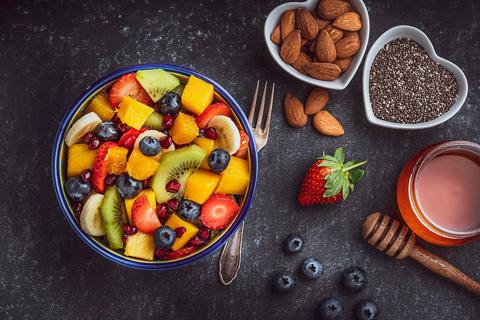
Stay hydrated, opt for fruits, veggies, whole grains and lean protein — and try to eat snacks and smaller meals throughout your day instead of larger portions
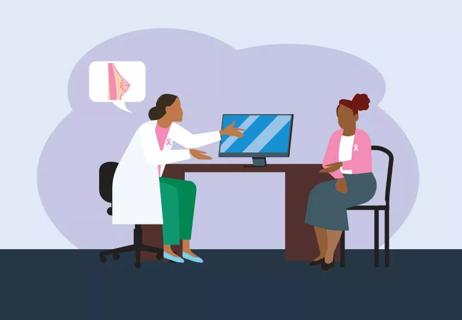
Being better informed can help you feel more confident about your care options and decisions
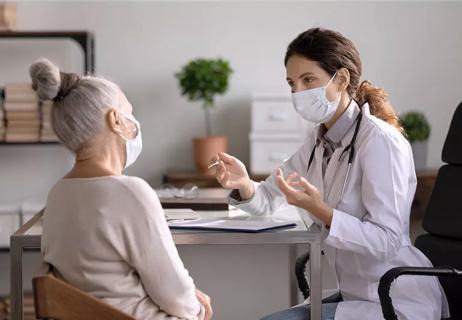
Palliative care offers a comprehensive network of support at any stage, from diagnosis to treatment and beyond

The answer is yes — but there are things you can do to help boost your energy
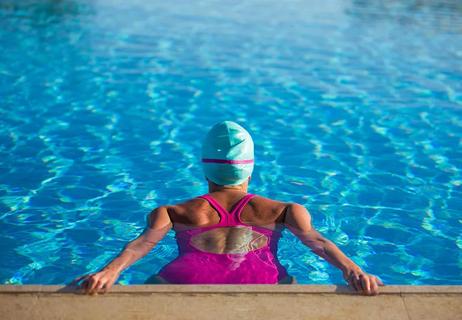
Physical activity and weight management can minimize your chances of getting the disease

Research consistently shows that soy-based foods do not increase cancer risk

Research doesn’t show a link between the personal hygiene product and breast cancer
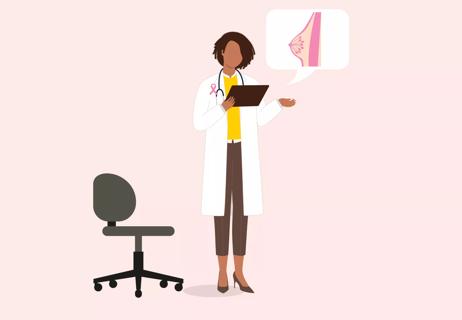
Lumps may move and you may feel pain, but breast discharge typically isn’t a sign of cancer

Focus on your body’s metabolic set point by eating healthy foods, making exercise a part of your routine and reducing stress

PFAS chemicals may make life easier — but they aren’t always so easy on the human body

While there’s little risk in trying this hair care treatment, there isn’t much science to back up the claims